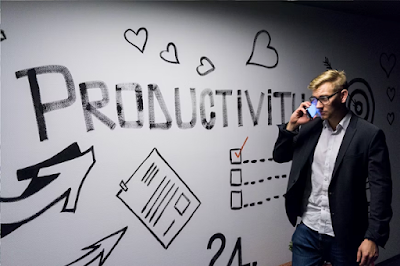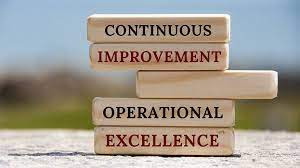Image Source: Unsplash
As a business leader or manager, it’s your job to ensure that your team can meet and exceed their goals and milestones and to do so as safely and stress-free as possible. Yes, feeling a bit on edge can help some employees to drive results, but they shouldn’t be so uneasy that it affects their work and well-being. You can combine safety and goal attainment in many ways and bring your company to the next level, by starting with these tips.
Set Reasonable Goals And Cut Out Unnecessary Tasks
It’s natural for a business to want to set lofty goals and expect work to be done as quickly as possible to maximize profit. However, while that strategy might work for the short term, at some point, your employees will get burned out, and you’ll find more errors in the work. Too many errors can cut down on your company’s success over time, and once your reputation takes a hit, it can be tough to come back.
With that in mind, one of the most straightforward strategies to reduce human error is setting reasonable deadlines. Bring in your team, see if they feel rushed, analyze if it affects their work, and make the proper adjustments. If you must adjust your corporate guidelines and extend deadlines a few more days, but errors become practically nonexistent, then you’re on the right track. Another idea is to create an overall long-term goal but then add numerous short-term goals that are easier to meet along the way. Then you’ll know everyone’s on the right page.
While you’re analyzing the workflow, look at the tasks that make up the overall project and find the repetitive assignments that bog down the employee’s days. When workers are forced to spend time doing monotonous, repetitive tasks, they can tend to get burned out. If they don’t think what they’re doing is making a difference, they may stop putting forth the same effort or showing up altogether. Burnout is not only bad for business but also for the employee’s well-being. Plus, it can lead to issues down the road, including depression.
If you still need to complete these repetitive
tasks as part of your business, then a solution may be automation. Computers
can do monotonous tasks and do them well. They never get tired or complain, so
it’s a worthwhile investment if it makes sense within your industry.
Take Stress Out Of The Equation
The burnout we’ve discussed begins as stress and often accompanies feelings of being overworked or underappreciated. The solution is to create a positive work environment so everyone is happy, and in turn, they’ll be more productive.
Stressed workers can put themselves and others at risk. Stressed employees may be so distracted that they can accidentally cut corners or forget to take the proper precautions to keep themselves safe, like failing to wear a hard hat or misusing electronic equipment. Stress can also lead to poor decision-making under pressure.
To reduce stress and increase productivity, managers can allow employees to take stress management training sessions. You can also host team-building activities so they feel more comfortable at work and with each other. The best way to ensure that the team is safe and productive is to be transparent and have open communication across the board.
As a leader, you need an open-door policy and
allow the employees to come to you when they need help or have suggestions.
Keeping communication channels open and providing employees with different ways
to check in can also be a good way to boost
team morale, especially if this feedback is used to refine workflows
and give everyone the chance to participate.
Training And Recognition
Once you streamline a solid and safe workflow, you must keep up with it by having ongoing training sessions throughout the year. Train on the best methods to avoid burnout, the ways to complete the most work without stress, and the signs of excess anxiety, so an employee can ask for help when needed.
If your employees are hurt on the job, your team may never meet your goals, so it’s also important to have general safety training once a day or annually, depending on the dangers in your industry. During the training, touch on safety and health policies, emergency procedures, workers’ rights, and how to report hazards. In addition to the general training, provide safety training for specific roles that deal with unique hazards. If your industry is particularly dangerous, then hold regular safety every morning to cover all bases and ask for questions.
You can drive home the importance of safety and goal attainment by implementing one or several employee recognition initiatives to show appreciation for adherence to the rules. There are many safety recognition programs online that you can borrow, such as Safety Bucks, where you provide pretend currency whenever an employee does an act correctly or spots a safety violation. They can turn them in for prices or office perks. Another idea is to hand out safety certificates or host an awards ceremony.
On top of that, you can also publicly
recognize employees who find a way to streamline their work, hit deadlines, and
provide exceptional quality in their work. Mention them during a group huddle
or in the company newsletter. The employee will be thrilled that they received
attention, and they will continue to impress. Plus, the other team members will
see the recognition and want to work at that level so they can also receive
praise.
Conclusion
A company with a strong culture of safety and
the right processes in place has a great chance of succeeding and doing so with
a happy and driven workforce. Always find ways to prioritize your employee's
safety and mental health. You’ll have a satisfied team and they’ll thank you
through their work.
About the Author: Luke Smith is a writer and researcher turned
blogger. Since finishing college he is trying his hand at being a freelance
writer. He enjoys writing on a variety of topics but technology and business
topics are his favorite. When he isn't writing you can find him traveling,
hiking, or gaming.







